Abstract
As the initial step in a five-year project to improve control of high blood pressure in Edgecombe County, North Carolina, a survey was conducted in 1980 to determine the prevalence of hypertension and to identify factors which might constitute barriers to the use of medical care by hypertensives. This report summarizes the findings for the 539 hypertensives identified through the baseline survey. In general, Black hypertensives reported more access problems than Whites. Within race, however, males and females differed very little on selected measures of potential access to medical care. Among women, lower scores on potential access were strongly associated with being untreated, whereas for men, concerns about the safety of anti-hypertensive drug therapy were associated with being unaware. On a summary measure of the actual use of medical care in response to symptoms, both male and female treated hypertensives scored higher than their untreated counterparts. The implications of these and other findings for community-based blood pressure control activities are discussed.
Full text
PDF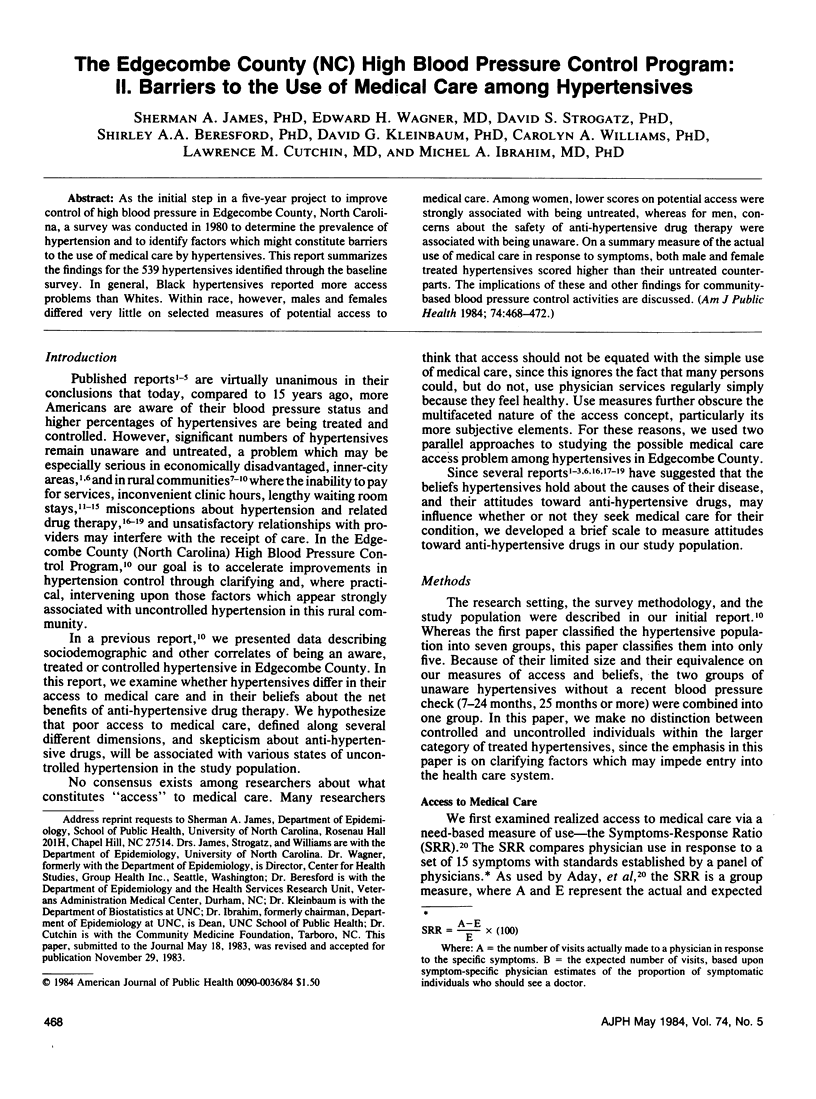
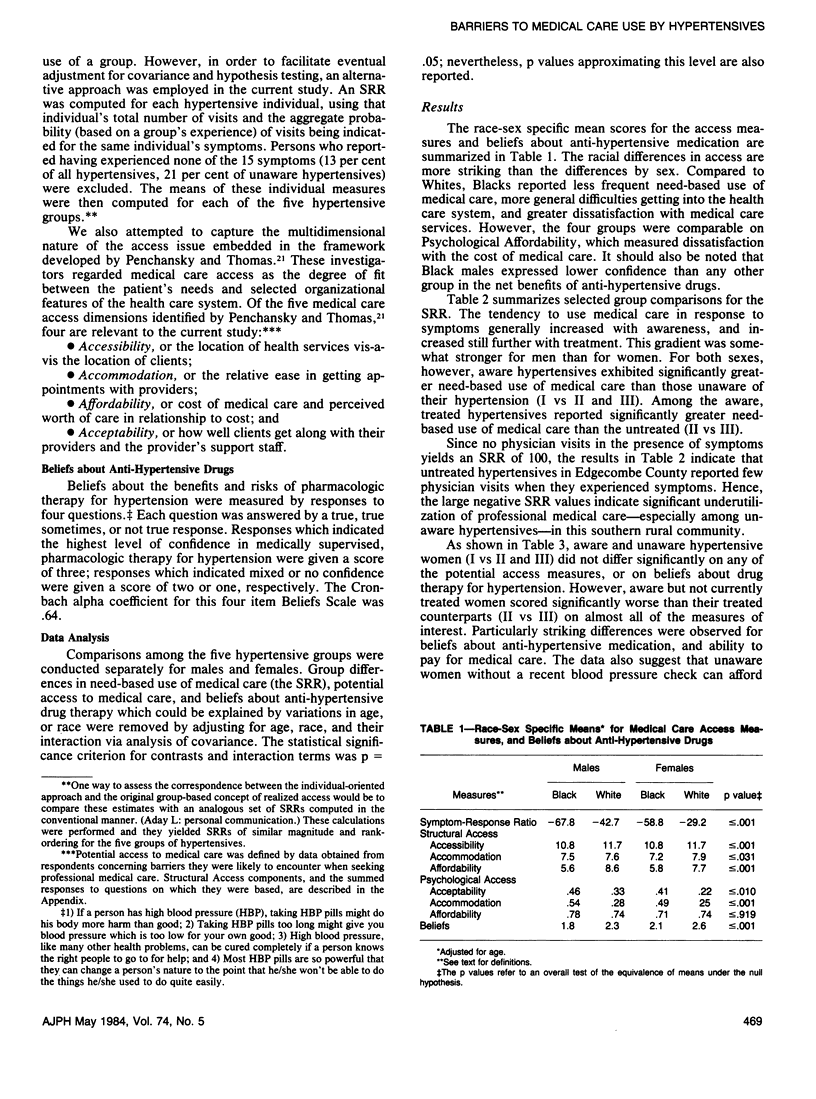
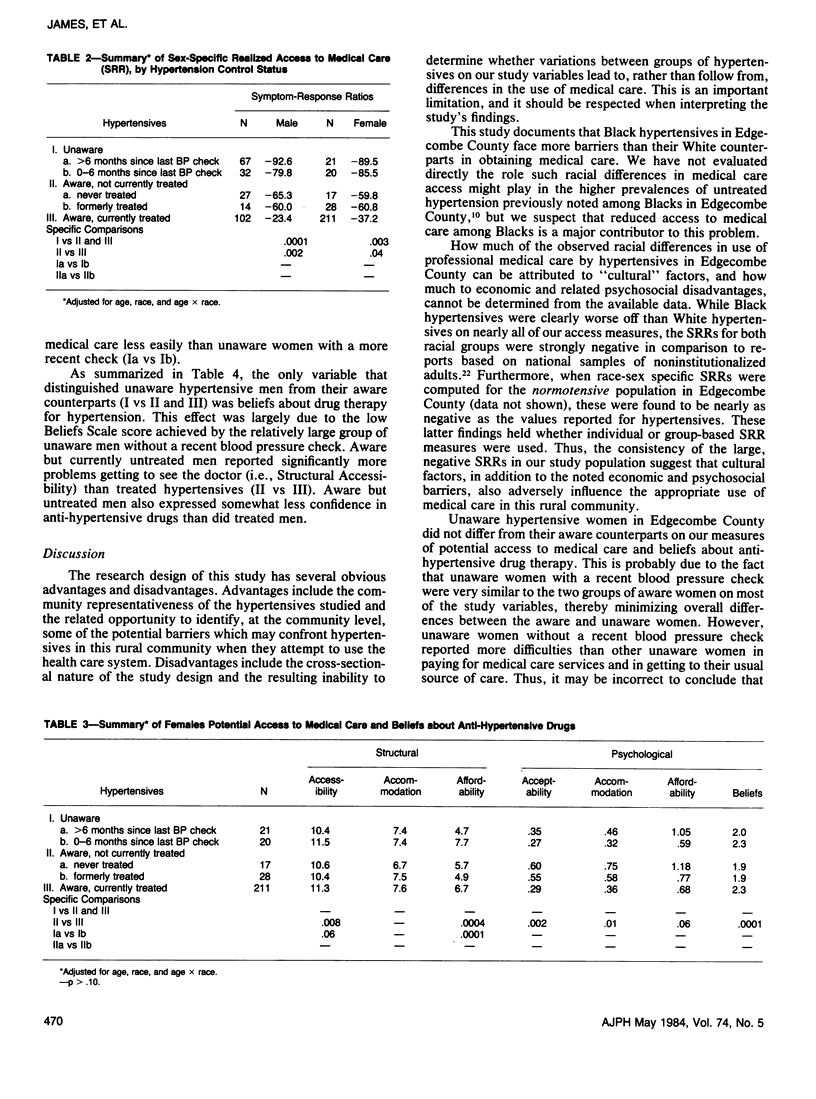
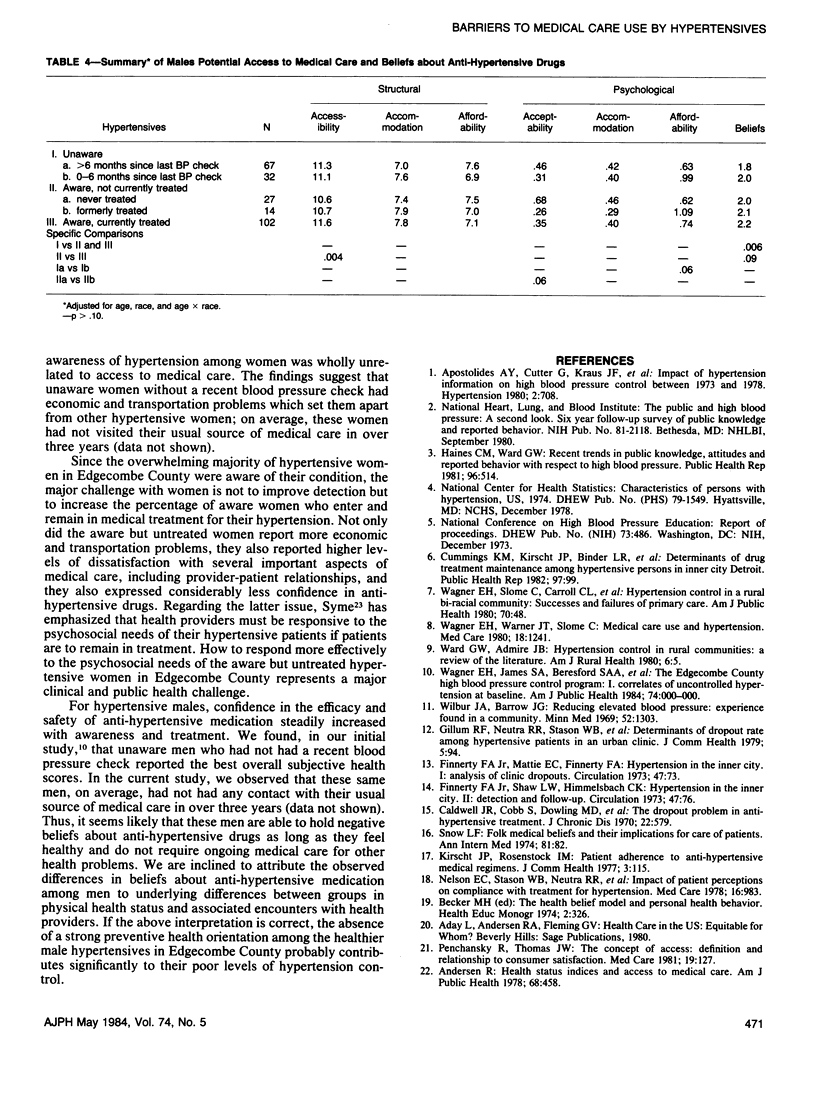
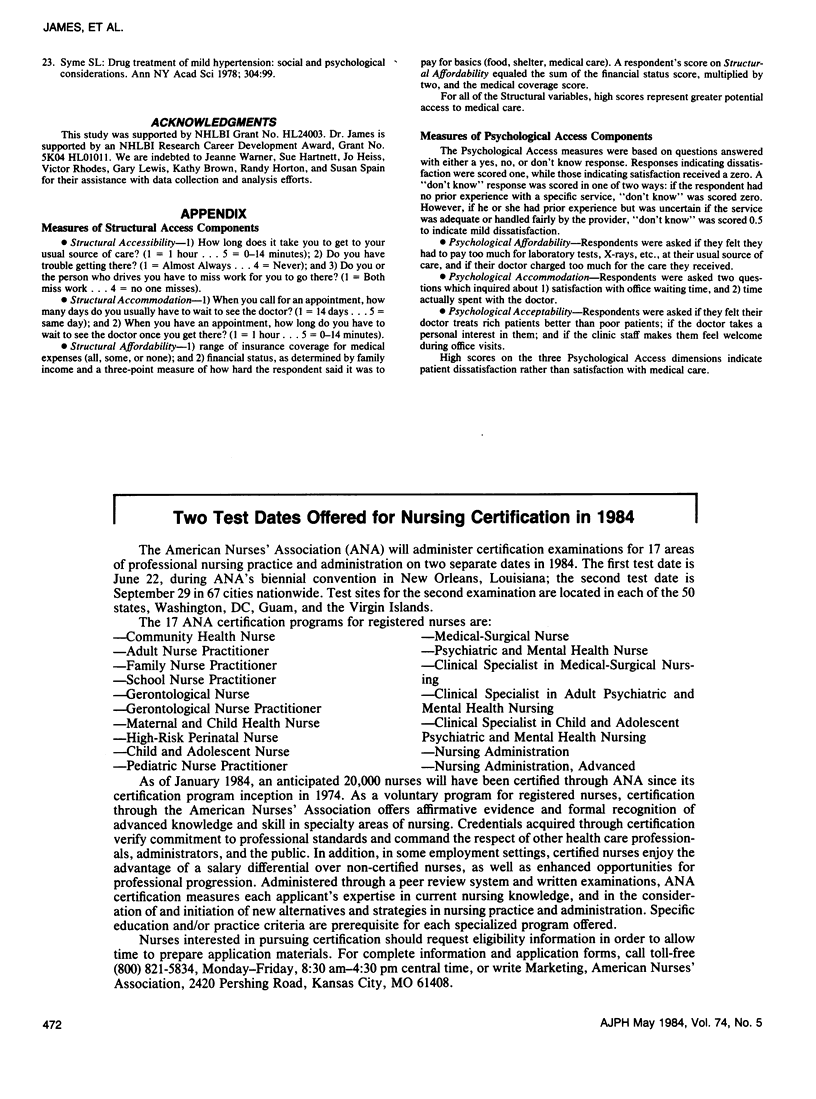
Selected References
These references are in PubMed. This may not be the complete list of references from this article.
- Andersen R. Health status indices and access to medical care. Am J Public Health. 1978 May;68(5):458–463. doi: 10.2105/ajph.68.5.458. [DOI] [PMC free article] [PubMed] [Google Scholar]
- Apostolides A. Y., Cutter G., Kraus J. F., Oberman A., Blaszkowski T., Borhani N. O., Entwisle G. Impact of hypertension information on high blood pressure control between 1973 and 1978. Hypertension. 1980 Sep-Oct;2(5):708–713. doi: 10.1161/01.hyp.2.5.708. [DOI] [PubMed] [Google Scholar]
- Caldwell J. R., Cobb S., Dowling M. D., de Jongh D. The dropout problem in antihypertensive treatment. A pilot study of social and emotional factors influencing a patient's ability to follow antihypertensive treatment. J Chronic Dis. 1970 Feb;22(8):579–592. doi: 10.1016/0021-9681(70)90034-2. [DOI] [PubMed] [Google Scholar]
- Cummings K. M., Kirscht J. P., Binder L. R., Godley A. J. Determinants of drug treatment maintenance among hypertensive persons in inner city Detroit. Public Health Rep. 1982 Mar-Apr;97(2):99–106. [PMC free article] [PubMed] [Google Scholar]
- Finnerty F. A., Jr, Mattie E. C., Finnerty F. A., 3rd Hypertension in the inner city. I. Analysis of clinic dropouts. Circulation. 1973 Jan;47(1):73–75. doi: 10.1161/01.cir.47.1.73. [DOI] [PubMed] [Google Scholar]
- Finnerty F. A., Jr, Shaw L. W., Himmelsbach C. K. Hypertension in the inner city. II. Detection and follow-up. Circulation. 1973 Jan;47(1):76–78. doi: 10.1161/01.cir.47.1.76. [DOI] [PubMed] [Google Scholar]
- Gillum R. F., Neutra R. R., Stason W. B., Solomon H. S. Determinants of dropout rate among hypertensive patients in an urban clinic. J Community Health. 1979 Winter;5(2):94–100. doi: 10.1007/BF01324011. [DOI] [PubMed] [Google Scholar]
- Haines C. M., Ward G. W. Recent trends in public knowledge, attitudes, and reported behavior with respect to high blood pressure. Public Health Rep. 1981 Nov-Dec;96(6):514–522. [PMC free article] [PubMed] [Google Scholar]
- Penchansky R., Thomas J. W. The concept of access: definition and relationship to consumer satisfaction. Med Care. 1981 Feb;19(2):127–140. doi: 10.1097/00005650-198102000-00001. [DOI] [PubMed] [Google Scholar]
- Snow L. F. Folk medical beliefs and their implications for care of patients. A review bases on studies among black Americans. Ann Intern Med. 1974 Jul;81(1):82–96. doi: 10.7326/0003-4819-81-1-82. [DOI] [PubMed] [Google Scholar]
- Syme S. L. Drug treatment of mild hypertension: social and psychological considerations. Ann N Y Acad Sci. 1978 Mar 30;304:99–111. doi: 10.1111/j.1749-6632.1978.tb25579.x. [DOI] [PubMed] [Google Scholar]
- Wagner E. H., Slome C., Carroll C. L., Warner J. T., Pittman A. W., Pickard C. G., Williams B. O., Cornoni-Huntley J. C. Hypertension control in a rural biracial community: successes and failures of primary care. Am J Public Health. 1980 Jan;70(1):48–55. doi: 10.2105/ajph.70.1.48. [DOI] [PMC free article] [PubMed] [Google Scholar]
- Wagner E. H., Warner J. T., Slome C. Medical care use and hypertension. Med Care. 1980 Dec;18(12):1241–1250. doi: 10.1097/00005650-198012000-00009. [DOI] [PubMed] [Google Scholar]
- Wilber J. A., Barrow J. G. Reducing elevated blood pressure. Experience found in a community. Minn Med. 1969 Aug;52(8):1303–1306. [PubMed] [Google Scholar]


